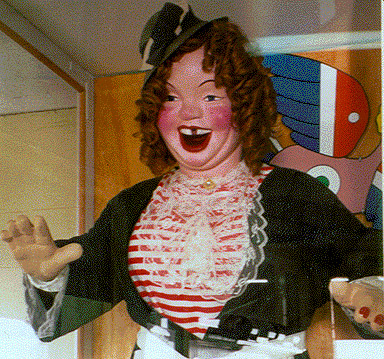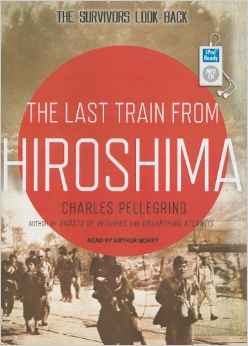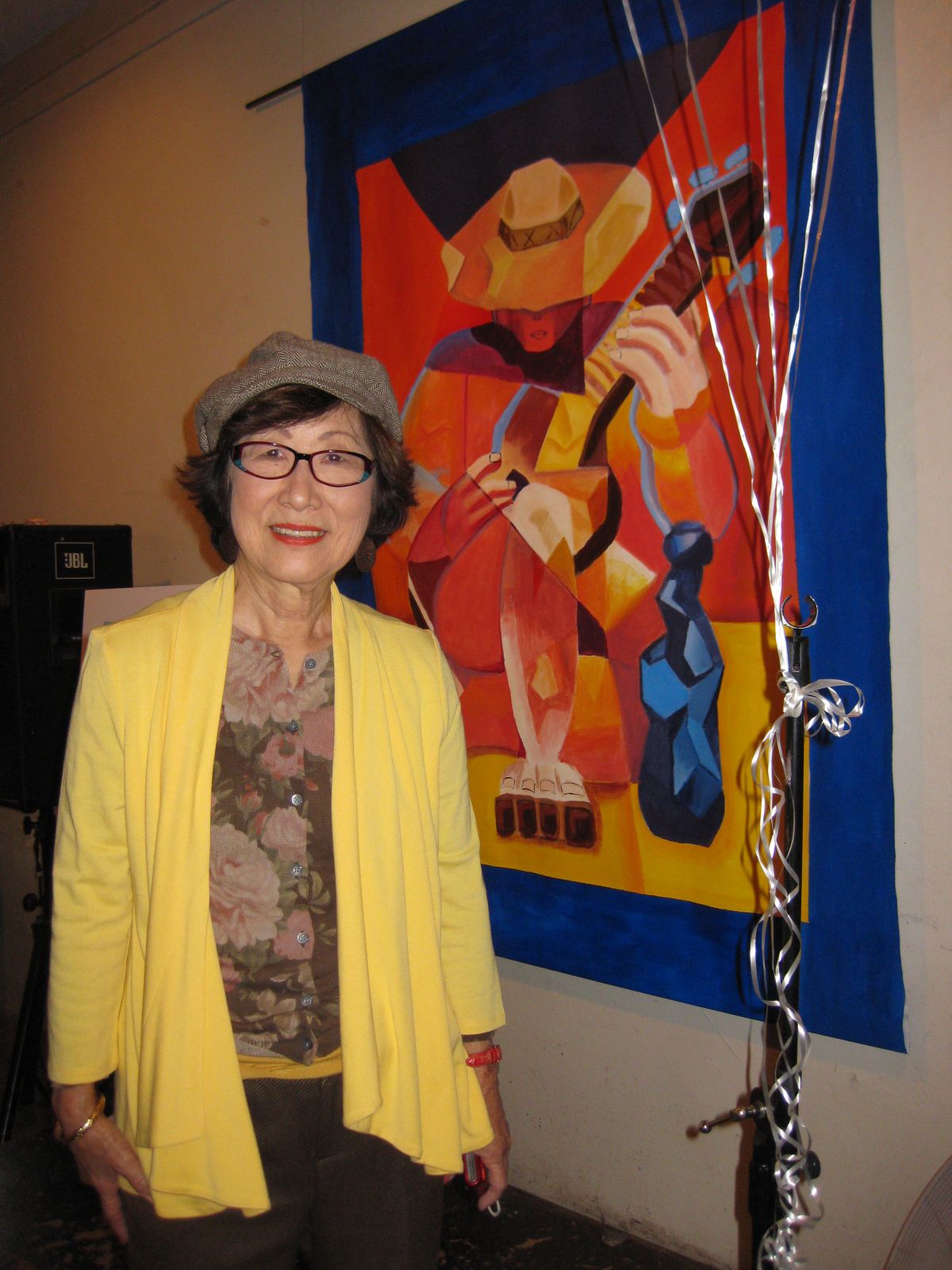Now we have even wilder speculation about "World Basketball" making it into the pages of the Bee and other local media sources. You think maybe it's because the people proposing these crackpot ideas have influence, money and fit with the agenda of the Bee and other local media? Certainly, it is not at all unreasonable to ask, "why?"
The answer is right in front of us, actually, in the pages of the Bee. If you look closely, the magic of sports fantasia begins to morph into a dot which connects to a whole lot of larger issues and their dots. With a few unquestioned hints, the Bee has planted the idea that, with a sportzy palace and a couple of home-town teams, we're on the way to a hoop-full of sports-minted gold and the world-mecca of the sports and entertainment industry.
What the little India hoop-craze fantasy leads to are some unexamined dots about the future economic stability of our city that rides on some grand world-at-our-door motif. You don't have to be a z-axis thinker to want to ask a whole lot of serious questions about making this thing pay off— here and now. Because if it doesn't pay off, big time, we're in deep doo-doo.
Nobody really knows. But, in ten or fifteen years (the time it takes, according to leading sports economists, to really know if these projects are going to succeed or fail) we could have a very large, very expensive white elephant on our hands, while the investors run off to the bank to cash out (Cleveland Silverdome fashion) and the builders went to the bank long ago, and we're left holding the bag . So there's a big dot that needs to be connected about slanting news, even a little, to mask real serious questions that needed to be asked.
That dot also leads to questions about what kind of anchor it is that a City would tether its economy to the success of some sports/entertainment venue, which connects to a dot about who and how it was decided that our future would depend on whether we citizens got swept into this sports-mania (along with whether the KIngs have a winning or losing season). Instead, it is simply taken for granted that we all sit in the stands (those that can afford to) like good fans and not bother about who should really be designing the future of our communities and scripting our realities and the realities of our children for generations to come. And those dots may well be connected to ones about who besides the very well-off will even be able to afford to go to more than a few games a year with their families....
Now add those to current questions about the mayor's "stong-mayor proposal" and whether that aids and abets the further exclusion of citizens from major processes and decisions about the future shape of our city.
But that's how the agenda and bias you don't see work. They spread out in all directions, and they are designed so that the reader (that "ideologically biased reader") is too busy pondering his/her own bias to even notice. Make no mistake, it's the Bee and other local media that script these matters and how we think about them from the beginning. Perhaps we should ask yet another question about where the dots lead that have turned the Bee into little more than a marketing division for Kings Inc.?
We're not saying sports aren't an important part of our culture, or they can't be "Big Fun" (to borrow a phrase from another venue that is due some close examination of its own).But when a small, if noisy and enthusiastic, minority of citizens (about 15% by most counts), and a few wealthy out-of-town investors and some local businesses and developers with vested interests can script a reality that will be the way we all do business for a very long time, then serious questions about whose scripting this "reality", and do we wish to live in it, have to be asked.
Certainly, our media has played a major role in promoting this and other realities. But they really haven't asked any of the serious questions that needed to be asked. In this case, they did manage a few stories marginally dealing with the risks the arena project engendered. Strangely, those stories came out only after our City Council had taken its final vote to approve the project. A fact (dot) that is certainly connected to why they championed excluding the public from voting on the matter, and a process which would have undoubtedly brought with it the vigorous debate that would have answered many of those and other questions before decisions were actually made.
I like sports. And I certainly hope the Kings do well and our soccer team is well supported, and they and the River Cats provide a whole lot of entertainment and some economic return for our residents. But is the business of the private, tax-exempt sports industry, really what cities are about and what they ought to be hitching their wagons to?
We won't hazard an answer here, though a good many nationally and internationally recognized sports economists have warned mid-sized cities like ours of getting involved in these kinds of deals. But we will raise these questions so that readers can think outside the very narrow frames our press and media have provided us and would like us to stay within.
Dot by dot, then, we move on to ever larger and more important questions about the quality and kind of lives we want to imagine for ourselves and the future of our city. We're no longer even talking about arenas or strong-mayor proposals or CEAV projects (all subjects that will be dealt with in future editions of the Z.)
No, we're talking about asking a lot of questions, on a whole lot of subjects. We're talking about examining frames and agenda and the unnoticed and unasked.
Above all, we're trying to exercise our imagination to look beyond the scripted realities of our press and public officials at those more distant realities they don't bother to mention. The ones that may just decide whether we survive as a species or a planet.
We'll have a lot to say in future issues about the collision between real-values and market-values. At present, there doesn't even seem to be a calculus for real-valued ideas and needs that would get them anywhere close to the tables where decisions are made about the future of our City.
We will ask why so many major projects get moved through the back rooms of City Hall, rather than through the front-doors of the Planning Department, where they really belong, the way everybody else has to do it.
So,that's what connecting dots is about. And "Framing?" what's that about? Well, consider the Bee's recent frontpage headline and lede—Johnson's legacy riding on fight for strong mayor - /outcome likely to determine if he'll run again". Looks like typical realpolitik yammer, yes? But consider the association being made in our press between Johnson's reputation and another term as mayor with whether the strong-mayor proposal succeeds or not. The way its framed virtually says, if you don't support the strong-mayor proposal then you don't support the mayor or his continuing in office.
Now that doesn't matter for those who don't like Johnson and don't want to see him run or win another term. But for the rest, its framed to suggest vote for the strong-mayor system or you're voting against Mayor Johnson. Indeed,supporters of the proposal have also suggested (as reported in the Bee) that our Mayor, with a strong-mayor system in hand, will be even more successful in his next term.
That's just another framing, presuming one accepts that he has been a success in his current term, that the strong-mayor proposal is just for him, or that it won't eventually fall into the hands of a mayor down the line who is a real tyrant and threat to our city. strong-mayorship", in those hands, can and will do enormous damage with the focus of power such a tool brings with it.
That's what framing does and our media uses it all the time to persuade you in one direction even when they seem to be talking in another. It applies to matters as large as circumventing a public vote about commiting substantial public assets and a restructured economy to a underwrite a risky private project, down to something as small as reporting that some jaywalker was "...also found to have drugs in his pocket."
It's not the overt, run-of-the-mill, FOX NEWS, variety of bias that's dangerous. It's the covert kinds that you hardly notice,if at all. They are a real threat to our being informed and conscious citizens. Indeed, one tactic sometimes used is to deliberatly plant a little obvious bias that we can all complain about, simply to distract us from the hidden ambitions being used to run a covert agenda. And, if I seem to be picking on the Bee, I'm not. That's not our agenda. It's just that they are such a large and obvious target for doing this kind of manipulating.
So, that's just a hint at what The Sacramento Z will be up to in issues to come. We're a z-axis bunch (that is, when we become a 'bunch' and there's more on board than just me). We'll have more to say about the z-axis and z-axis thought, too. For now, don't expect us to be on well-traveled roads (read your usual papers and watch your usual news for that). You may often not even find us on the less-traveled roads.
Z-axis is 90-degrees from those other two axis -- the one's we normally do all of our 'either/or' fighing over. Z-axis isn't partial to labels, scripted talking points or favorite burning causes. Z-axis is much more partial to roads not-traveled and, when we spot one, we're very apt to take it just to see where it might lead.
So, if you like what you find here, tell your friends. If you want to see this project flourish, offer to help in any way you can (except money. we don't take none of that). If you have a z-axis thought or wild but...idea, write it down and submit it. And if you want to get the most out of what the Z has to offer, then put aside the labels,exercise your imagination, and see where it leads. That can do wonders for a world that seems all too broken most of the time.
Omoiyari, your editor.
 Laughing Lady
Laughing Lady





